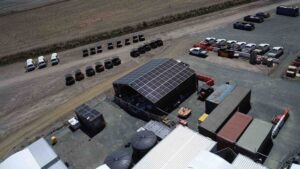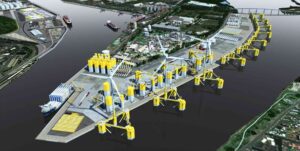Scientists from the Nanyang Technological University in Singapore have developed a low-cost “wind harvester” which can harness energy from wind as gentle as a light breeze and store it as electricity.
Designed by scientists from NTU Singapore, the new wind harvester is able to generate and store power at wind speeds as low as 2 metres per second (m/s). Each wind harvester is only 15cm by 20cm and can produce a voltage of 3 volts and generate electricity power of up to 290microwatts.
The wind harvesters also boast low wear and tear, made as they are from a fibre epoxy. The main energy generating attachment that interacts with the wind is also made from inexpensive materials such as copper, aluminium foil, and Teflon.
Energy is generated when the harvester is exposed to wind flow, causing the device to begin vibrating, making its plate begin tapping a stopper.
“This causes charges to be formed on the film, and an electrical current is formed as they flow from the aluminium foil to the copper film,” the researchers say.
Tackling a lack of small-scale wind energy generators
And while such a small wind turbine might seem relatively impractical, the NTU scientists believe their wind harvesters have potential as a replacement for batteries in LED lights and structural health monitoring sensors – such as those used on bridges and skyscrapers.
In laboratory tests, the wind harvester was able to power 40 LEDs consistently at a wind speed of 4m/s.
“As a renewable and clean energy source, wind power generation has attracted extensive research attention,” said Professor Yang Yaowen, a structural engineer from NTU’s School of Civil and Environmental Engineering (CEE).
“Our research aims to tackle the lack of a small-scale energy harvester for more targeted functions, such as to power smaller sensors and electronic devices.
“The device we developed also serves as a potential alternative to smaller lithium-ion batteries, as our wind harvester is self-sufficient and would only require occasional maintenance, and does not use heavy metals, which if not disposed of properly, could cause environmental problems.”
The most commonplace wind turbines are the huge towers that can measure upwards of 125-metres in height and generate power of 2MW and up. But these turbines, as big as they are, often only begin generating energy when the wind reaches a certain speed.
Big-name wind turbine OEMs like Vestas and Siemens Gamesa, however, both manufacture turbines for low wind speed zones with cut-in speeds as low as 1.5 or 2m/s.
By contrast, at only 15cm x 20cm and yet still able to generate power from such slow wind speeds, wind harvesters could significantly help to reduce electronic waste such as batteries.










